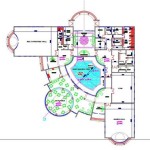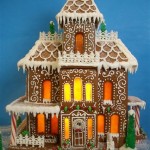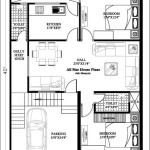Essential Elements of a Simple Electrical House Plan
Designing an electrical plan for a house may seem daunting, but by understanding a few key elements, you can create a safe and efficient system. Here are the essential aspects to keep in mind:
Load Calculation: Determine the total electrical load of your home by considering the wattage of appliances and devices that will be used simultaneously. This calculation ensures you have sufficient capacity to handle the electrical demand.
Circuit Breaker Panel: The circuit breaker panel is the central hub of your electrical system. It protects against overloads and faults by automatically tripping when the current exceeds a safe limit. Select a panel with sufficient amperage and circuit capacity for your load requirements.
Wiring and Conduit: The electrical wiring and conduit protect and route the electrical cables throughout your home. Use the appropriate wire gauge and conduit size to meet the current and voltage requirements of each circuit.
Lighting Plan: Plan for adequate lighting in all rooms, considering natural light and the desired ambiance. Include a combination of general lighting, task lighting, and accent lighting to enhance functionality and aesthetics.
Outlets and Switches: Determine the optimal placement of outlets and switches to accommodate your appliances, furniture, and daily routines. Ensure there are enough outlets to avoid overloading and provide convenience.
Grounding and Bonding: Proper grounding and bonding connect electrical components to the earth, ensuring safe operation and preventing electrical shocks. Include grounding rods and bonding connections in your plan.
Labeling and Documentation: Clearly label all circuits, outlets, and switches for easy identification during installation and maintenance. Keep detailed documentation of your electrical plan for future reference and any required inspections.
Professional Assistance: While you can create a simple electrical house plan yourself, it is highly recommended to consult a qualified electrician for complex designs or projects requiring permits. They can ensure compliance with electrical codes and safety regulations.
By incorporating these essential elements into your electrical house plan, you can create a safe, efficient, and convenient electrical system that meets your needs for years to come.
Create An Electrical Plan Roomsketcher Help Center

Electrical Plan Example House App Layout

Free House Wiring Diagram Edrawmax

Electrical Plan Myrtle House Elizabeth Burns Design Raleigh Nc Interior Designer Ceiling Wiring

House Electrical Plan Diagram Symbols

House Wiring Diagram Everything You Need To Know Edrawmax

Small House Electrical Plan Cad Drawing Cadbull

Easy To Use Floor Plan Drawing

How To Draw An Electrical Plan With Roomsketcher

Electrical Plan 101 Know Basics Of Edrawmax








